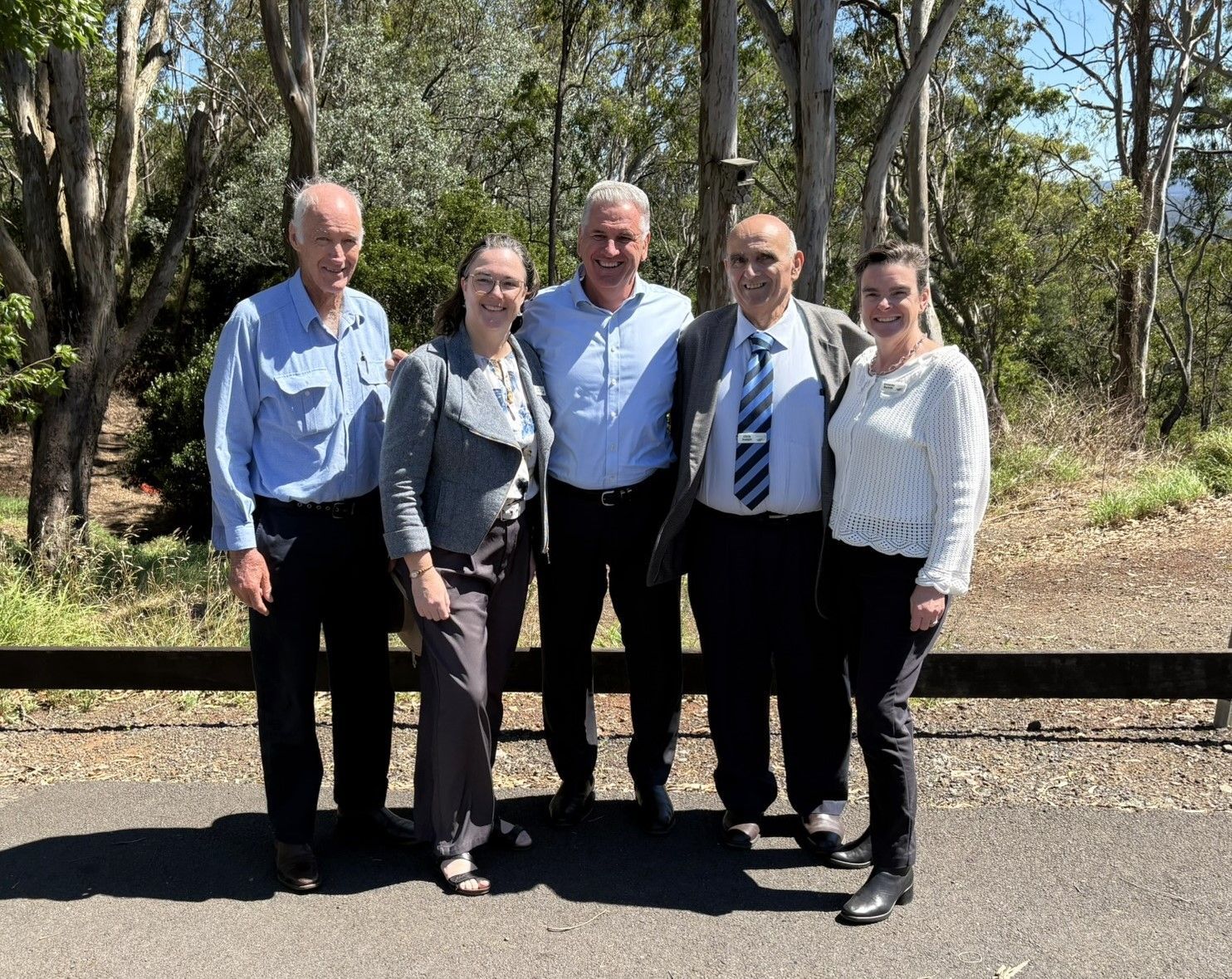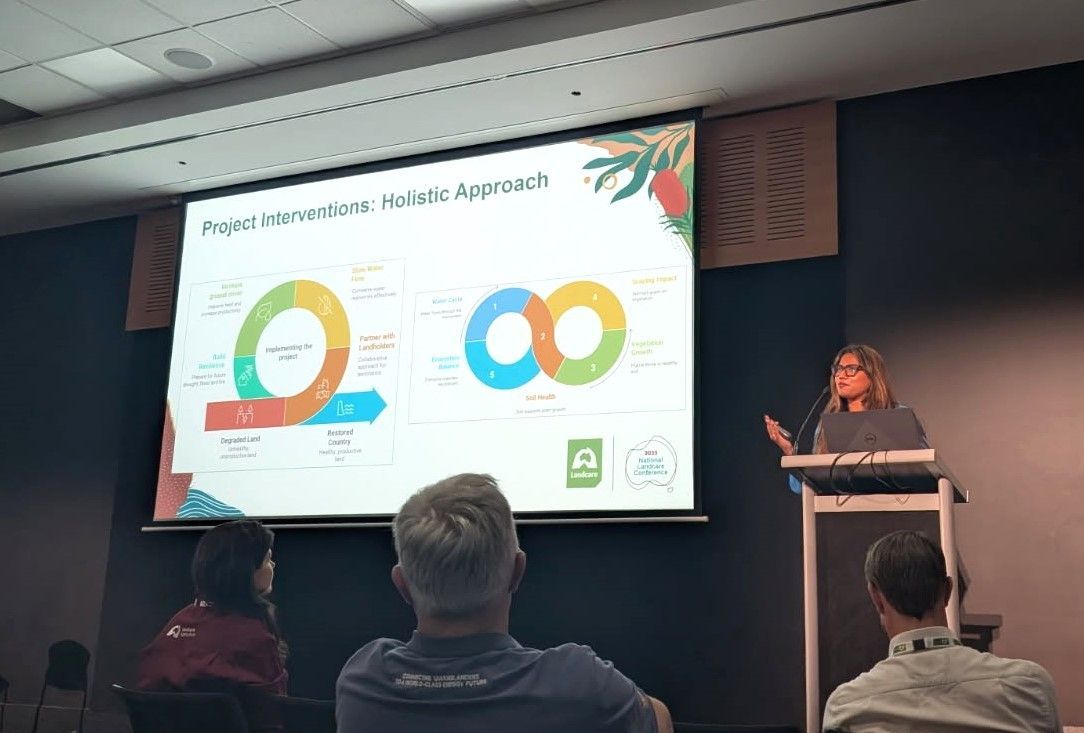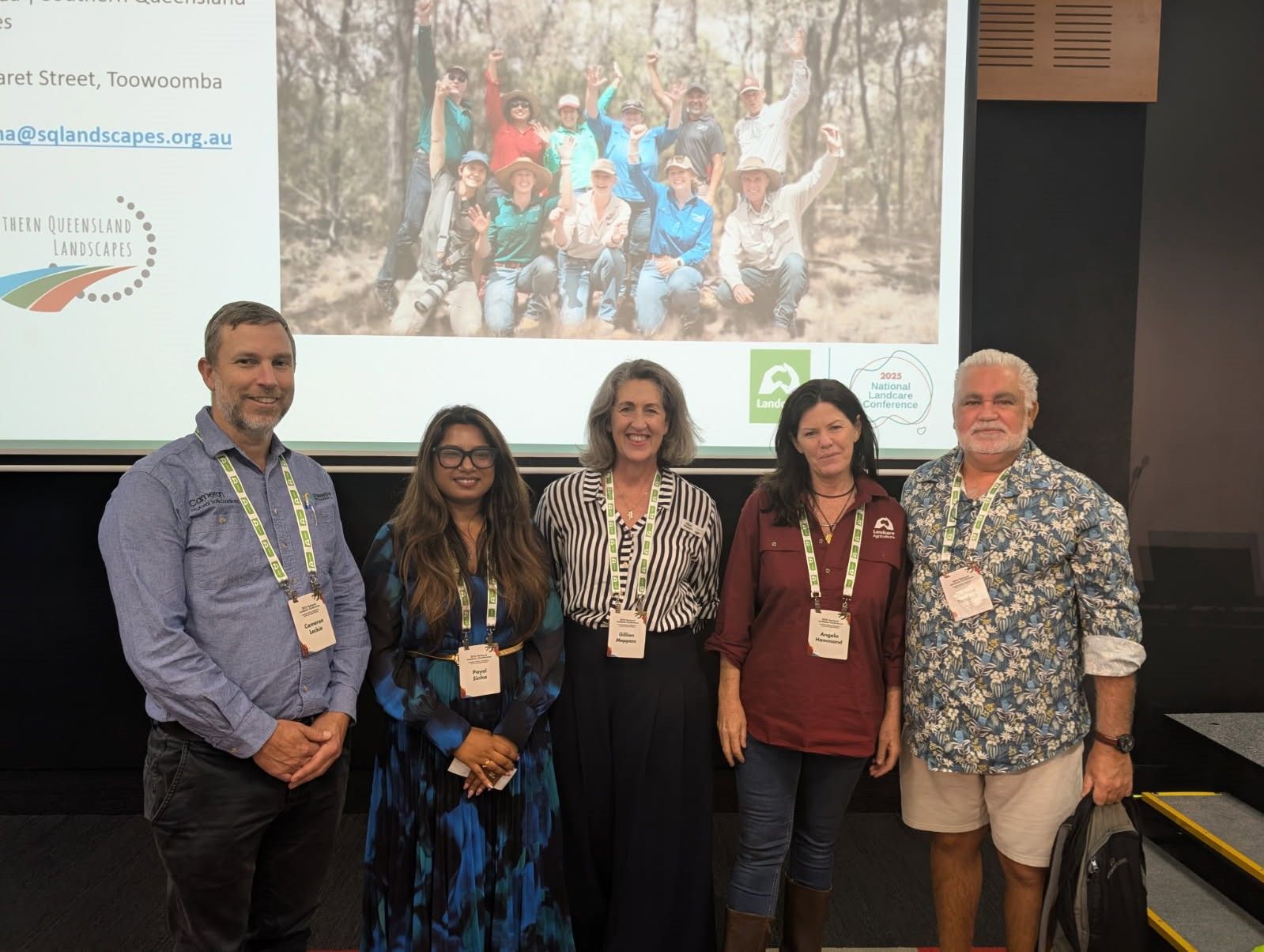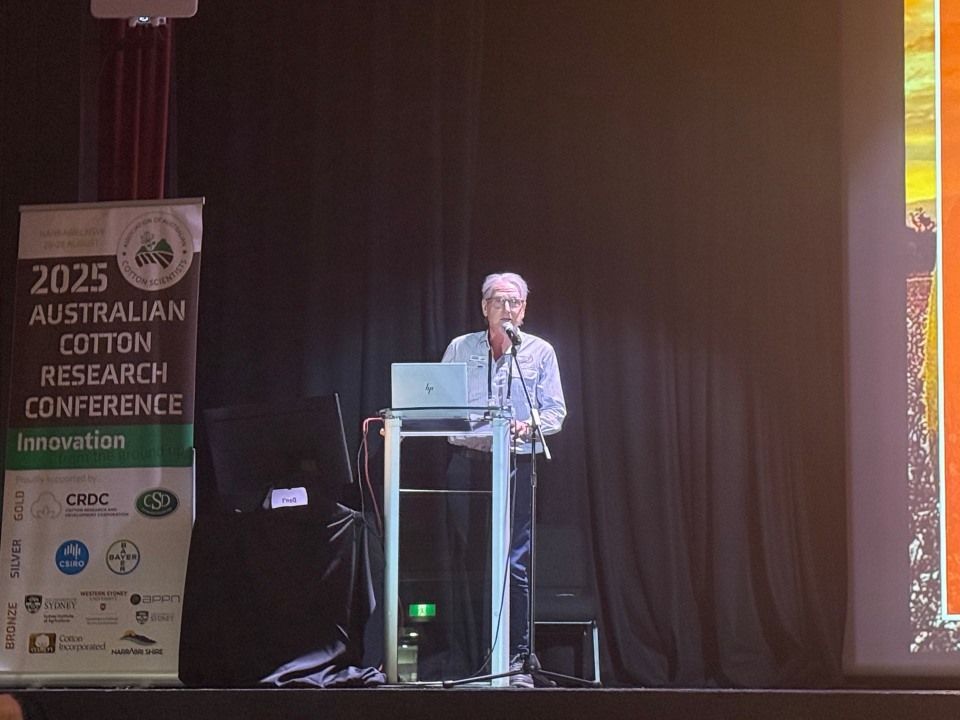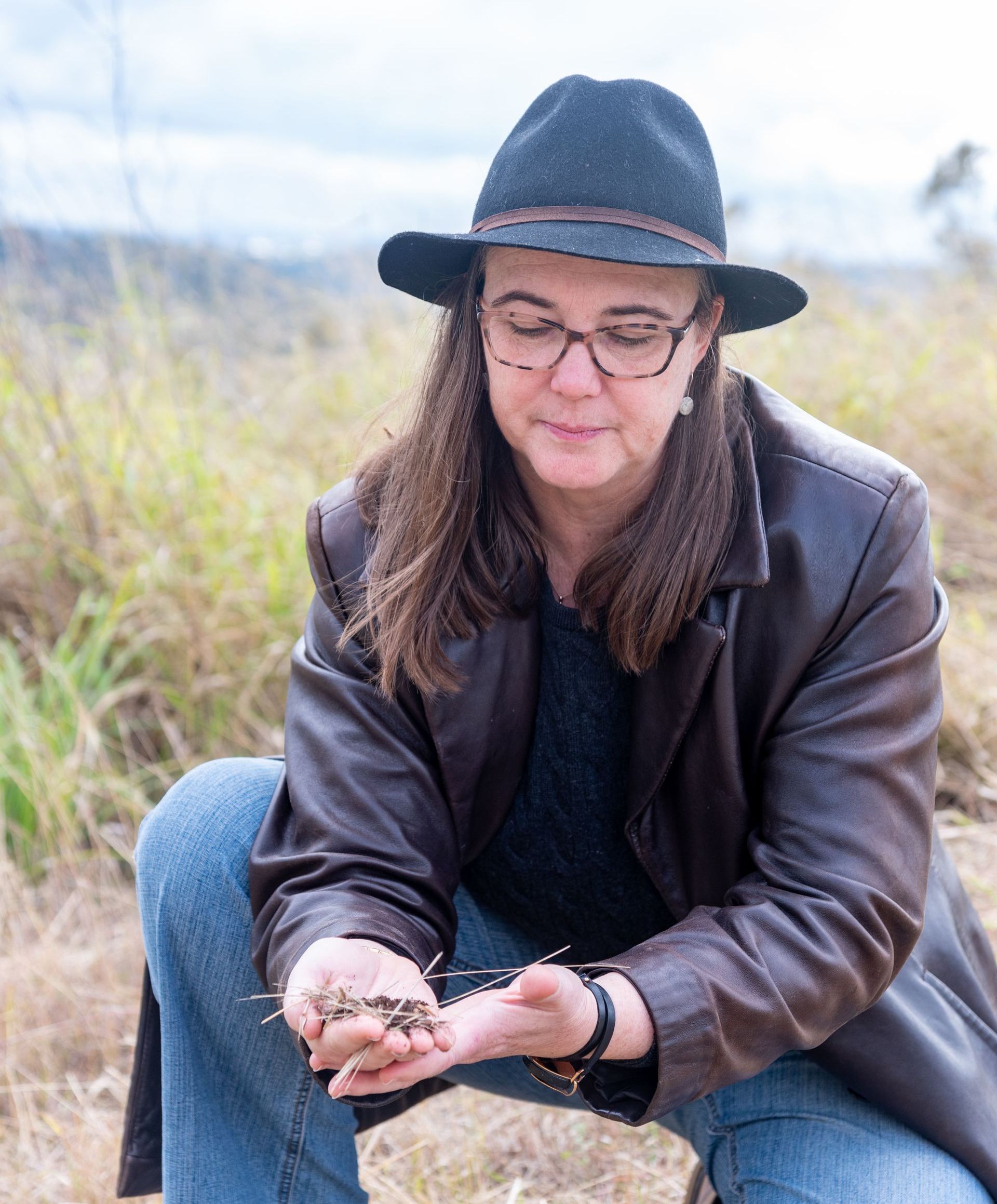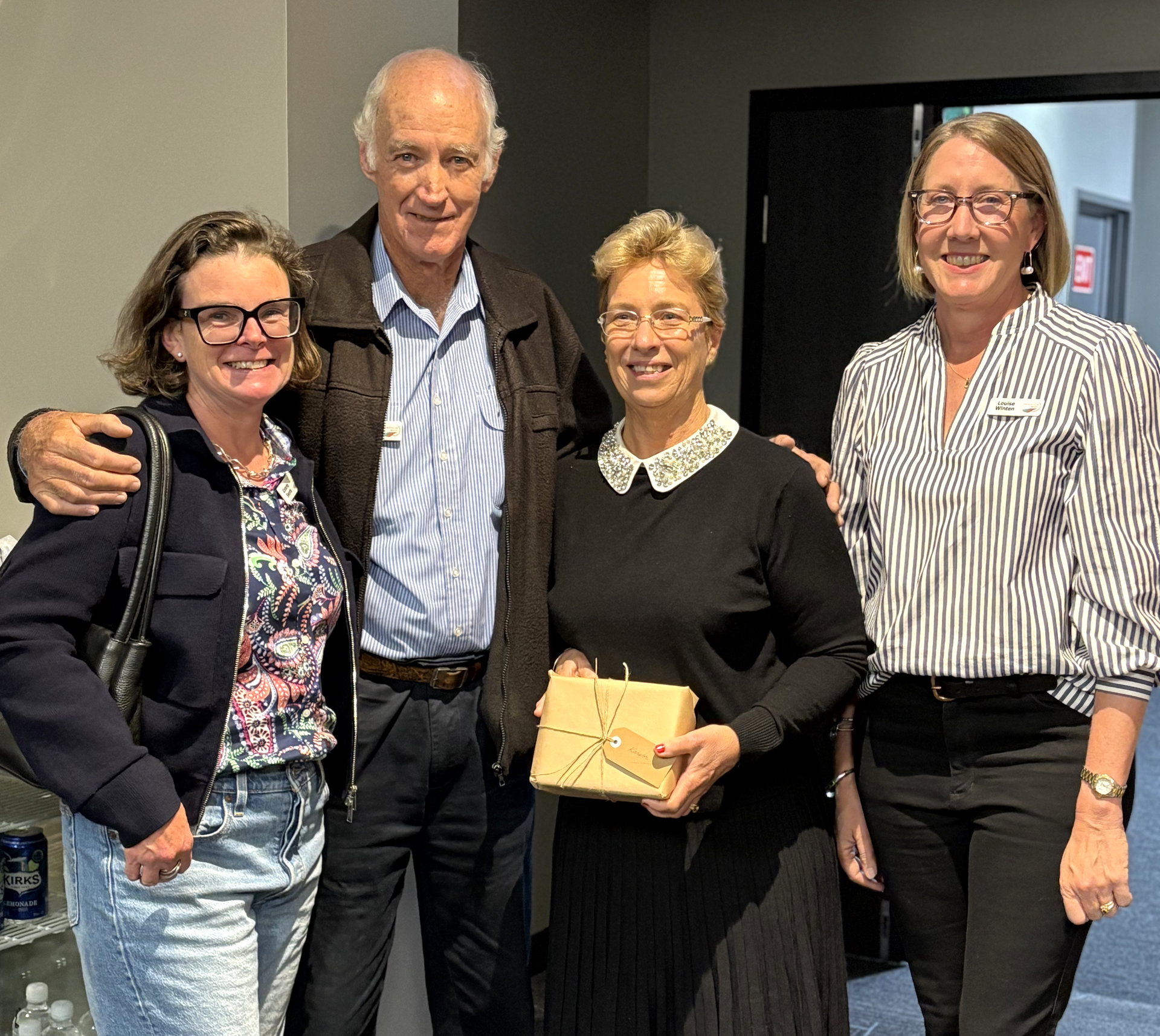Meet Hercules, Southern Queensland Landscapes’ latest Springer spaniel who after several months of extensive training will become the latest addition to the Conservation Detector Dog team. Nicknamed ‘Hakka’, when he graduates from training, he will be a recognised expert in detecting fox and koala scents; with those skills going on to assist in a variety of pest management and conservation projects.
Hakka’s handler, Project Delivery Officer and former Ugandan Wildlife Ranger Hanington Agaba is optimistic about Hakka’s transition into the team.
“Hakka is a massive upgrade for our team, particularly as our oldest detector dog, Rocky, begins to retire,” Hanington Agaba said.
“He’s already mastering the fox and koala scents, which is a terrific achievement given we only started training in late January,” Mr Agaba said.
“We hope to train him in as many scents as we need, but currently we are teaching him to identify fox dens and endangered koalas,” he said.
“While the training does encompass identifying scents, there’s other components too including bonding, obedience, and commands which will help him do the best job he can while in the field.”
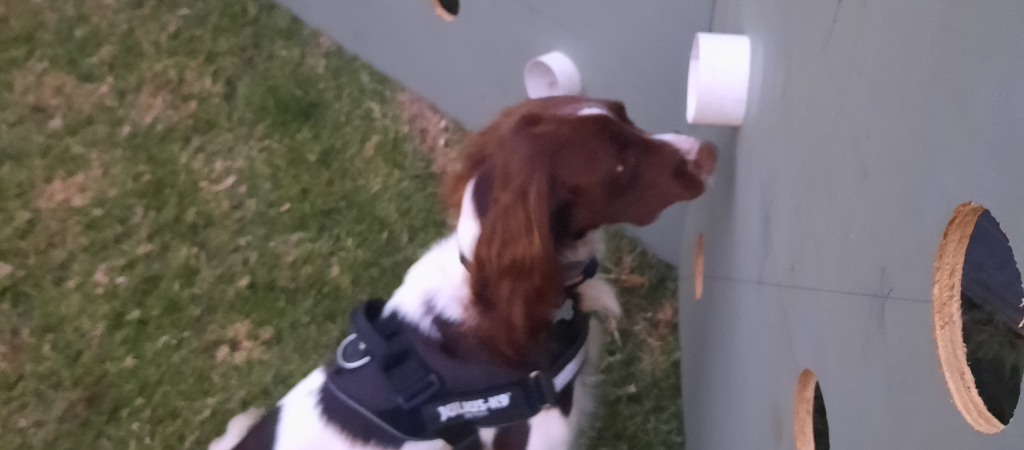
Conservation dogs find, focus, and indicate on a particular scent, which is achieved through various training aids and exercises like use of a scent wall.
The training hones and builds on Hakka’s natural instincts and abilities. Dogs are uniquely skilled with excellent scent detection capabilities and intelligence for training that makes them ideal for this line of work.
So how do you train a young puppy to become a conservation detector dog? Well, there are a variety of methods which Mr Hanington employs to train new scents and behaviours; both at home and out in the field.
“We will often start our day with a walk, which gets him some exercise and also to help him become used to things like traffic, other dogs, and different environments. We never know where we might be working next, so being used to a variety of situations is very important,” Agaba Hanington said.
“Then, after a brief rest back home, we will start on the scent wall, which is a wall we have constructed with various holes carved out, which we then have fixed with different scents in a PVC pipe, moving them around every time so Hakka has to really work to locate them,” Mr Hanington said.
“I will use commands like “Find fox” or “Find koala” and he will know what I’m looking for. He will dart around trees, shrubs, and different obstacles where I may have hidden scents in the past, which helps him identify where foxes may lie,” he said.
“He will eventually make his way back to the wall, and will tap the right pipe with his nose and paws when he’s found it, repeating at least ten times to properly hone in on that behaviour and by the end he will know not only to search for the scent in different environments around the yard, but also learn that it won’t be the same spot, thanks to the scent wall.”
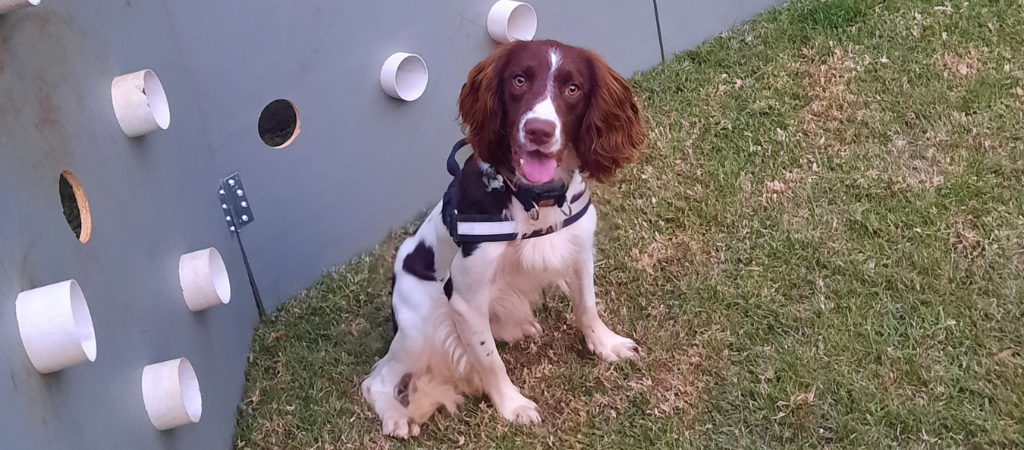
Conservation dogs are trained to develop absolute focus on their handler's directions and to ignore distractions.
Mixing scents around scent boards and different vegetation is key to training the puppy and the scents used vary between animals, but will often include different items such as fur and tails for foxes, and scat or skin for koalas; all are ethically sourced.
Different scents can be used to differentiate the animal, with koala scat generally placed at the base of a tree, while skin is hidden higher in the canopy to teach Hakka to identify particular scents and characteristics in different locations and to avoid him only looking for koala scents on the forest floor.
“Having koala scents near trees, and fox scents in deep shrub and waterways helps him identify where these animals might live. If we only relied on the scent wall, he would only look there, which isn’t what we want,” Agaba Hanington said.
“Once we’ve finished with the scent wall, we will then move to a nearby park or nature reserve for “field” training, which is very important as the parks, national forests, and hike trails we visit to simulate the environments he will work in,” Mr Hanington said.
“I will hide the scents in water pipes, in thick brush, under trees, in river banks, and many other areas which really push Hakka to search for the scents,” he said.
“It doesn’t take him long; he’s a very smart dog and there’s a real sense of accomplishment when he finds his scent.”
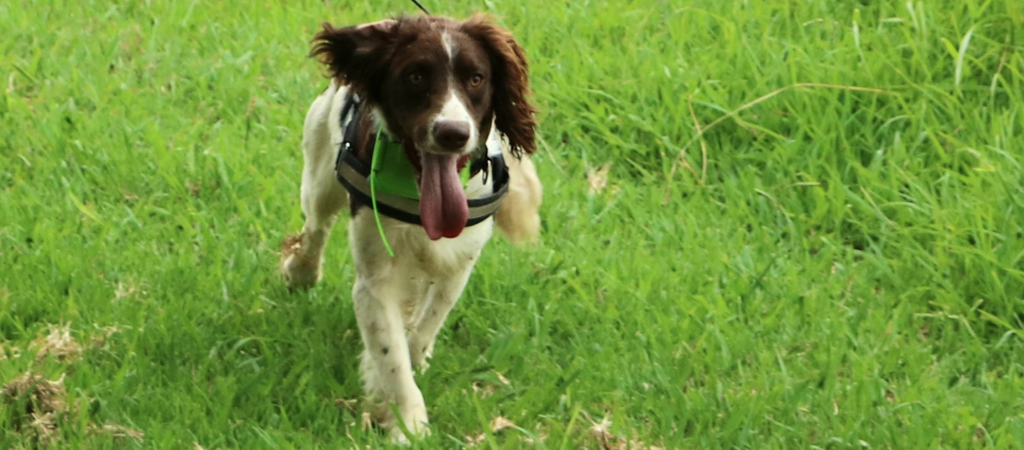
Springer spaniels are ideal for detection dog duties due to their drive and discipline.
Despite beginning training on foxes at the start of February, already by March Hakka began showing signs of mastering his basic commands and scent locating abilities.
“He’s progressing really well in this stage, which is a great milestone for the team. Soon we hope to have him move towards our next milestone,” Agaba Hanington said.
“The next milestone will involve him working with the other dogs in the team, Rocky and Cooper, with whom he is related by litters,” Mr Hanington said.
“This chapter of his training will ensure he is able to work flexibly with his fellow detector dogs in a positive way with the right behaviours we want to develop. It will also help us identify what behaviours he emits in the field when he locates the right animal,” he said.
“For example, if he finds a fox den, we want to know how he reacts; whether he dives into the den, tries to dig them up; or if he sits and stays put when he finds one.”
As a former Ugandan Wildlife Ranger, Agaba Hanington has worked extensively with Springer spaniels for conservation projects in the past, and is excited for his future work with Hakka.
“We already share a strong bond and he reminds me greatly of my previous dogs Mia and Pippa,” Agaba Hanington said.
“I’m very excited to get out in the field with him for some of our conservation projects,” Mr Hanington said.
“He will really thrive with our fox detection programs, as well as the recently-announced Koala project, which he will be instrumental in,” he said.
“I hope that we can train him in other areas as well, such as detecting native bird carcasses or different feral pests.”
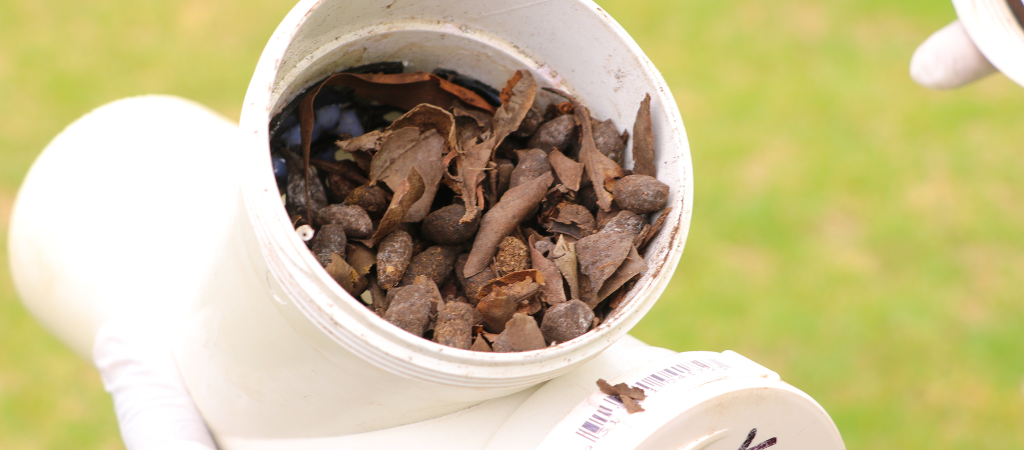
“We are supporting the conservation power of these detector dogs by providing the team with koala scat collected from the floors of our exhibits for use in training.” Frank Mikula said.
The curator of Lone Pine Koala Sanctuary, Frank Mikula, said that the use of detector dogs like Hakka help support conservation efforts for endangered Koala populations.
“The use of detector dogs for conservation work is becoming more and more popular. The ability of the dogs to locate wildlife through scent is amazing and can certainly increase the accuracy of any field study,” Frank Mikula said.
“Koalas are arboreal animals and as much as you may think that they are easy to spot from the ground, their fur colouration and body shape does a great job of hiding them amongst the branches and leaves of the forest,” Mr Mikula said.
“Utilising detection dogs will mean that greater areas can be covered and surveyed more accurately. More accurate surveys mean better information to base management of the species off and hopefully improve the chances of making a positive difference to the koala population in Southeast Queensland,” he said.
“We are supporting the conservation power of these detector dogs by providing the team with koala scat collected from the floors of our exhibits for use in training.”
With the rising rate of extinction among many native species, the work of detector dogs and other programs to mitigate feral pests and support endangered species will only continue to grow more important.
Learn about how the Conservation Detector Dog team protects endangered species here:
https://www.sqlandscapes.org.au/conservation-detector-dog-program
Learn more about Agaba’s story from Uganda to Southern Queensland here:
Federal government throws outback koalas a lifeline:
https://www.sqlandscapes.org.au/federal-government-throws-outback-koalas-a-lifeline
Visit the Lone Pine Koala Sanctuary:
https://lonepinekoalasanctuary.com/



